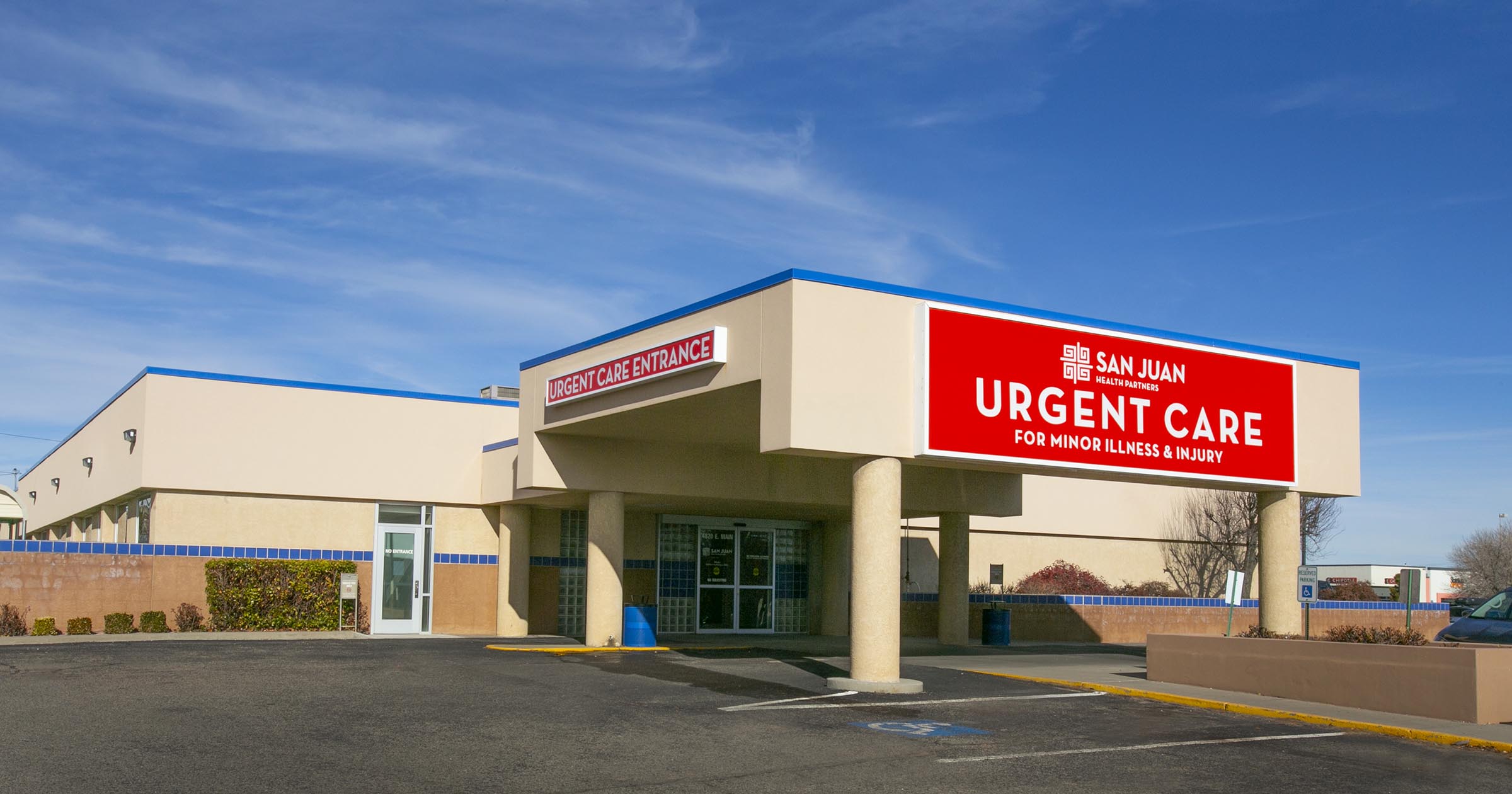Comprehending the Function of Urgent Treatment in Offering Timely Treatment for Non-Life-Threatening Conditions
Immediate treatment facilities have actually become an essential component of the healthcare landscape, dealing with the immediate requirements of clients with non-life-threatening problems. By supplying timely and obtainable medical services, these facilities successfully bridge the space between main care and emergency divisions. However, the effects of their role extend beyond mere benefit, triggering a more detailed evaluation of when and how these facilities are made use of. Comprehending the subtleties of immediate treatment could considerably affect patient outcomes and the total performance of healthcare shipment. What factors add to their growing importance in contemporary medication?
What Is Urgent Treatment?
Urgent treatment describes a classification of medical services developed to attend to non-life-threatening problems that call for immediate attention. These facilities act as an intermediary between health care doctors and emergency clinic, using a hassle-free alternative for clients who require punctual treatment without the comprehensive waiting times typically connected with emergency divisions.
Immediate treatment centers are usually staffed by physician, including medical professionals, nurse experts, and doctor aides, who are educated to diagnose and treat a vast range of conditions. Common solutions provided by these centers include therapy for small injuries, health problems, and infections, along with diagnostic examinations such as X-rays and laboratory job.
Additionally, urgent care facilities frequently approve walk-in patients, removing the need for consultations. Overall, urgent care plays an important function in the health care system, making certain people can access essential medical solutions quickly and effectively.

When to seek treatment at an urgent treatment facility rather of a main care medical professional or an emergency room,Numerous individuals might find themselves uncertain regarding. Immediate care is made to resolve non-life-threatening problems that call for prompt attention yet are not serious adequate to call for an emergency situation area see.
Usually, one need to think about urgent take care of issues such as minor fractures, sprains, cuts needing stitches, or infections like urinary system infections. Additionally, chilly or influenza signs and symptoms, breakouts, and allergies can likewise be properly handled in this setting.
It is necessary to note that immediate care is not suitable for serious emergency situations, such as breast pain, problem breathing, or serious blood loss, which necessitate immediate emergency clinic treatment.
Individuals that lack access to a medical care doctor or can not safeguard a timely appointment might also profit from urgent care services. Ultimately, recognizing when to utilize urgent care can result in more reliable health care shipment, enabling patients to obtain the ideal level of treatment based upon their certain health and wellness requirements.
Benefits of Urgent Care Centers
Choosing immediate care facilities for non-life-threatening conditions provides a number of benefits that improve individual experience and accessibility. One main benefit is the reduced delay times compared to conventional emergency situation rooms. Immediate care facilities usually operate on a first-come, first-served basis, enabling people to receive prompt medical interest without the long delays typically connected with medical facility settings.
In addition, urgent treatment facilities offer prolonged hours, consisting of evenings and weekend breaks, fitting individuals with varying schedules. This versatility guarantees that people can look for care when it is most convenient for them, better advertising prompt treatment.

In addition, these facilities usually provide a thorough series of services, including small treatments and diagnostic tests, all under one roof. This debt consolidation of solutions not only simplifies the patient experience yet official source additionally fosters a much more cohesive technique to managing non-life-threatening health and wellness problems, ultimately benefiting overall patient results.
Typical Problems Treated
At immediate care centers, a variety of non-life-threatening problems can be effectively dealt with, giving clients with prompt and accessible clinical support. These centers are specifically experienced at dealing with problems that require punctual interest yet do not posture an instant threat to life or arm or leg.
Usual problems treated at immediate care facilities consist of small injuries such as sprains, pressures, and fractures. Immediate treatment facilities are geared up to carry out necessary analysis tests, such as X-rays and lab tests, enabling them to provide extensive care.
In addition, immediate care service providers can administer vaccinations, helping to avoid the spread of contagious conditions - Urgent Care. They likewise offer solutions for small procedures, such as suturing injuries or draining abscesses. By offering these diverse solutions, immediate care centers play an essential duty in linking the void between main care and emergency situation solutions, making certain people receive timely therapy for Urgent Care a vast array of conditions without the requirement for long haul times generally connected with emergency clinic
Exactly How Urgent Treatment Supports Medical Care System
Immediate treatment centers play a critical role in supporting the general medical care system by relieving the concern on emergency departments and offering timely access to medical treatment for non-life-threatening problems. By managing situations such as small injuries, infections, and health problems, immediate care centers permit emergency situation departments to concentrate on more crucial individuals needing immediate focus.
Furthermore, urgent treatment centers boost health care availability, using extensive hours and a much more practical option to conventional medical care settings. This availability is particularly valuable for clients who might not have a normal medical professional or that require prompt therapy outside of typical workplace hours. Consequently, urgent treatment centers efficiently minimize wait times and enhance person fulfillment.
Furthermore, immediate treatment centers add to set you back savings for both people and the medical care system by giving lower-cost services compared to emergency departments. This financial effectiveness is essential in an age of rising health care prices, allowing individuals to obtain necessary treatment without sustaining inflated expenditures.
Final Thought
In verdict, immediate treatment centers play an essential duty in the health care system by delivering timely treatment for non-life-threatening conditions. By bridging the space between main care and emergency clinic, these facilities make sure that individuals obtain timely clinical focus without the i loved this prolonged wait times commonly connected with emergency situation departments. The availability and performance of urgent treatment facilities contribute considerably to reducing the general problem on health care resources, boosting person results, and advertising a more effective medical care shipment system.
Immediate care centers have arised as an essential component of the medical care landscape, addressing the immediate demands of people with non-life-threatening conditions. Urgent treatment gos to normally incur lower out-of-pocket expenses compared to emergency division gos to, making treatment more budget-friendly for patients without jeopardizing quality. Urgent treatment facilities are outfitted to execute required diagnostic tests, such as X-rays and laboratory tests, enabling them to supply extensive care.
By using these varied solutions, urgent treatment facilities play an essential function in connecting the void between key care and emergency services, ensuring individuals obtain prompt treatment for a broad array of problems without the need for long wait times generally associated with emergency situation spaces.
In addition, immediate treatment facilities enhance medical care availability, using extended hours and a more hassle-free option to typical main treatment setups.